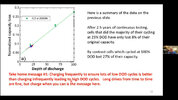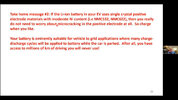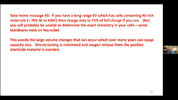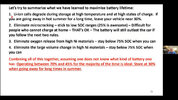bkp_duke
Well-Known Member
Tesla offering discounts for existing Powerwall owners to add more storage.
Just got this in my email a few minutes ago.

Just got this in my email a few minutes ago.
You can install our site as a web app on your iOS device by utilizing the Add to Home Screen feature in Safari. Please see this thread for more details on this.
Note: This feature may not be available in some browsers.
Tesla offering discounts for existing Powerwall owners to add more storage.
Just got this in my email a few minutes ago.
View attachment 964074

Posted without comment. (But wearing a smile).

Anti-Tesla ETF Set to Close After Hefty Losses
An exchange-traded fund headed by George Noble, a vocal critic of stocks such as Tesla, and of celebrity bulls such as Cathie Wood, will stop trading and liquidate later this month.www.barrons.com
I couldn't care less what happens to that clown. He'll say/post anything that helps himself and I would not categorize him as a Tesla fan boy. Low on signal and high on noise.Folks, Fred is potentially getting sued for being too much of a Tesla fanboy.
With such knowledgeable dealers, why would one need to do research first?View attachment 964040
You mean he didn't do the research before buying his EV truck? They got him!!
View attachment 964092
Hoping for Elliot wave final leg?
$10,000 for 2 chargers, one at home, one at work.
WTH did he install? DCFC to his house? /s
(yes, I saw he had to upgrade his home electric panel - it's a joke)
I ended up going with the FranklinWH system which was obtainable and seemed to slightly best the PowerWall. Support has been great as well.I will happily pay full price for a couple.
I ended up going with the FranklinWH system which was obtainable and seemed to slightly best the PowerWall. Support has been great as well.
How would it beat the powerwall, is it integrated into the tesla app ? I can see solar, powerwall, car and the energy flow between them in the tesla mobile app that controls the cars.I ended up going with the FranklinWH system which was obtainable and seemed to slightly best the PowerWall. Support has been great as well.
EV Battery Health with Dr Jeff Dahn | Dalhousie U Electric Vehicle Society (Aug 1, 2023)
"Everyone with an EV should want to maximize battery life. Understanding why Li-ion batteries..."




My defense would be "That car is just a prototype and will never get produced, so it is just vaporware. I just like the way it looks, it does not make me a fanboi"Folks, Fred is potentially getting sued for being too much of a Tesla fanboy.
The FranklinWH is slightly more capacity 13.6 kWh and higher peak at 10kW per battery. It also has a nice BlackStart feature if you fully drain the battery there is still a reserve that will start at 10, 12, and 2 and try to start solar to charge the battery. It is the slightly safer LiFePO4 chemistry that our local inspectors like. It has some “smart circuits” one can configure to shut down at various levels. For example I shut off all EV charging if the grid is down and the batteries drop below 85%. The app is nice but I agree it is not integrated with the Tesla App.How would it beat the powerwall, is it integrated into the tesla app ? I can see solar, powerwall, car and the energy flow between them in the tesla mobile app that controls the cars.
My model 3 does as of last software update charge off of leftover solar, I can see in near-real-time how many kW flow between solar, home, car and grid. I have the car to charge up to 50% from any source and up to 80% from solar only so it captures excess electricity that would be sent to the grid at off peak prices until 3pm when peak pricing starts and all solar goes to the grid while the home consumes from battery and the car stops charging until midnight when off peak pricing starts.
Also it allows me to participate in the VPP events when we get paid $2/kWh when a grid distress event is used to pump an aggregate of tens of megawatts into the grid to support.
I am excited for what else tesla gets to integrate and enable us to do, v2g maybe on newer battery tech in the near future, robotaxi bringing us extra energy when low etc
Posted without comment. (But wearing a smile).

Anti-Tesla ETF Set to Close After Hefty Losses
An exchange-traded fund headed by George Noble, a vocal critic of stocks such as Tesla, and of celebrity bulls such as Cathie Wood, will stop trading and liquidate later this month.www.barrons.com


